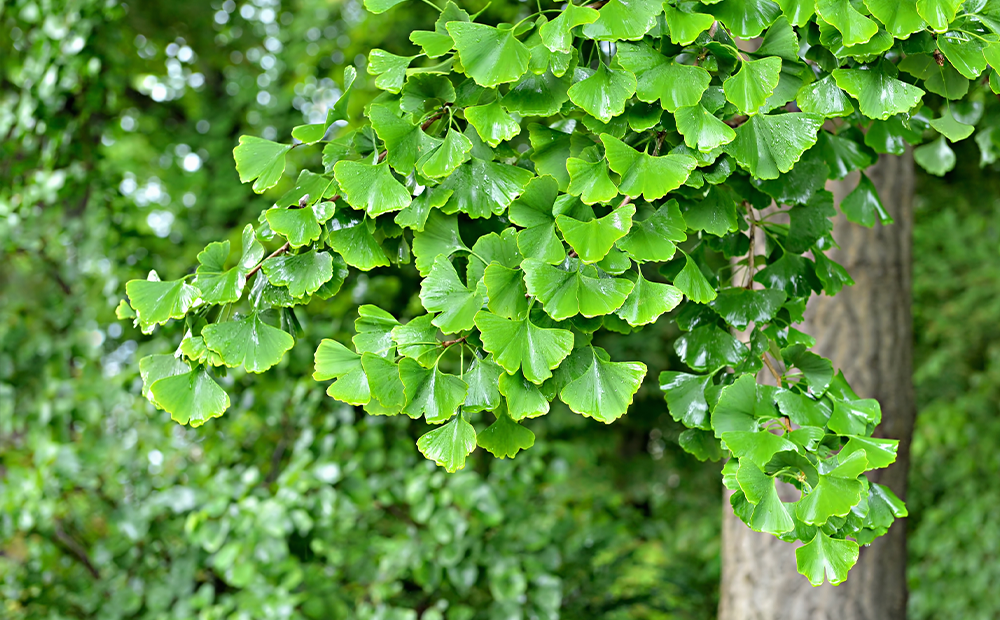WHY YOU NEED TO GET A GINGKO
Ginkgo Biloba is a beautiful and ancient tree that originates in China and is an excellent tree for urban landscapes. It has unique fan-shaped leaves that turn to a brilliant coppery golden yellow in the fall. They’re highly tolerant of urban pollution, road salt, and are very disease resistant. Ginkgo is also popularly grown in pots as bonsai trees by enthusiasts.
Besides their resilience and beauty, Ginkgo has a long history too. It’s one of the oldest species of tree that is still living. It’s been called a living fossil because it’s remained so unchanged throughout so much of history. Ancient leaf fossils have been discovered that are almost the same as leaves off of currently living trees.
Ginkgo’s were alive when the dinosaurs were. Because it’s been around so long, the Ginkgo is often a symbol of longevity and endurance in art and culture. There are 4 Ginkgo trees that survived the atomic bomb attack on Hiroshima in 1945 and are still thriving.
Ginkgo’s were thought to have been extinct because they disappeared from European fossil records. Still, they managed to survive in areas of China and began to be popularly cultivated around 1100 AD. Ginkgo is an oddity in the world of botany because it is the only species in the Ginkgoaceae family of plants.
Ginkgo as Landscape Trees
Unfortunately, Ginkgo trees have somewhat of an infamous reputation for having a terrible scent. But, that reputation is a bit misleading. The smell only comes from female trees that are producing fruit. Ginkgo trees are dioecious, which means they need a male and a female tree within pollinating distance to produce fruit. For the most part, nurseries now sell only male trees or completely sterile Ginkgo trees for landscaping, so you don’t have to worry about ending up with a stinky tree in your yard.
In their natural habitat, there are Ginkgo trees that can grow to be huge, as tall as 100 feet. But they’re not all giants. Cultivars have been developed that are much more suited to growing in residential landscapes, reaching heights between 20-50 feet tall.
Ginkgo Biloba Tree Care
Overall, Ginkgo Biloba trees don’t have many problems, and the male or sterile cultivars are very low maintenance. They are deciduous, so there will be leaf cleanup in the fall, but Ginkgo has a unique feature that makes leaf cleanup less annoying than other deciduous trees. They seem to drop almost all of their leaves at once when they’re ready, so you should need to be raking up leaves every week from September to November.
Ginkgo trees are very tolerant of all sorts of environments and soil types. Given a choice, it would choose loamy, well-draining soil, but it will still grow in tough compacted soil, clay or sandy, alkaline, or acidic. They do like humidity, so they don’t thrive in arid desert environments, but they should be just fine in the humidity levels we have around Indianapolis.
When they’re young, it’s important to keep Ginkgo trees well-watered while they establish themselves. Once they’re well established, they’re reasonably drought-tolerant. When they’re still young, they can benefit from spring fertilizing. Ginkgo’s grow quite fast, sometimes putting on 2 feet of height in one growing season! These trees need plenty of sunshine, at least 4 hours per day, so make sure to choose a sunny location when planting your sapling.
As they age, the bark on Ginkgo’s become deeply furrowed, and the trunk and branches develop a unique personality. They’re a striking addition to any landscape. If you’re looking for the perfect resilient street tree for your front yard or just want to add a unique tree to your landscape, consider a Ginkgo Biloba.
Swing by the Dammann’s Garden Co. next time you’re out and about, and have a peek through our collection of trees to see the Ginkgo’s currently available.






